■Twice in the morning and afternoon of June 25 (Wednesday), the "Edo Karakami Workshop" was held at Hamarikyu Onshi Garden and Houmetei. Matsuya Co., Ltd. ( Founded in 1690 (1690)).
I applied for this event and participated in the afternoon session.
■Lecturer: Mr. Yukio Koizumi. Born in 1947. Karagami is one of the few woodcut craftsmen of the fifth generation "Edo Karakami", counting from Shichigoro Koizumi, the first generation who was said to be a master craftsman of Edo. A traditional craftsman designated by the country and Tokyo, and received the Tokyo Metropolitan Excellent Skilled Engineer "Tokyo Meister". When the Hamarikyu Onshi Garden "Matsuno Ochiya" was restored, he was in charge of restoring the sliding doors and pasted walls. (From the notice printed matter)
■From Edo: "Karakami" is a technique in which woodblocks engraved with patterns are mainly painted with mica (white cloudica powder) and chalk (seashell powder), and patterns are copied on Japanese paper with handrails. It began with the imitation of "Mon Karagami", which came from China (Tang) during the Heian period, mainly in Kyoto, in Japan. With the progress of urban development in Edo by Tokugawa shogunate, we have achieved unique development in Edo as "Edo Karakami" in order to meet the diverse demands that have grown along with population growth. (From the notice printed matter)
■In the weather that was about to start off, Mr. Yukio Koizumi first toured the inside of "Matsuno Ochiya", where the sliding doors and pasted walls were restored.
□"Matsuno Ochiya" is a restoration of Ochiyaya from the 11th Shogun Ienari Tokugawa period.
□Yukio Koizumi explains the pattern of the restored pasted wall.
□Inside the "Matsu no Ochiya"
This "Matsuno Ochiya" is open to the public every Thursday at 1:00 pm and can be toured.
□Following "Matsuno Ochiya", "Tsubame no Ochiya" from the 11th Ienari era is currently under restoration work (scheduled to be completed next spring).
□Explanation and demonstration of Mr. Yukio Koizumi at Yoshimetei.
□This woodblock of "Kowakamatsu" was created in 1840 (1840). It is made of Japanese bigleaf magnolia.
□Participants copied patterns on three postcards with the cooperation of Yukio Koizumi, and came to receive them as souvenirs.
The patterns were "Kowakamatsu", "Gourd", and "Aomi wave ground scale crane". Since the mica is used, the pattern will sparkle when the angle is changed.
■It was a fun opportunity to experience Edo culture.
It seems that we are considering this workshop again this fall. If you are interested, please continue to check the information on the Internet.
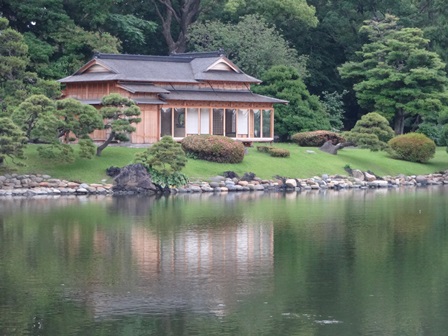
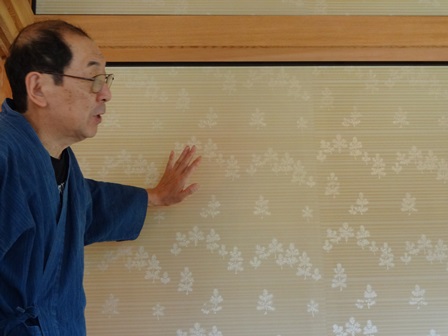
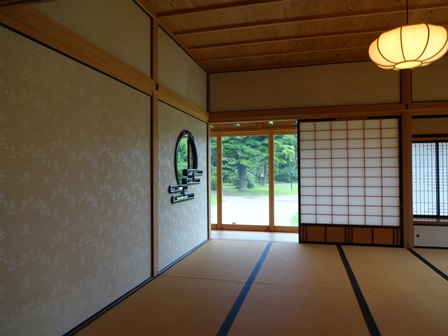
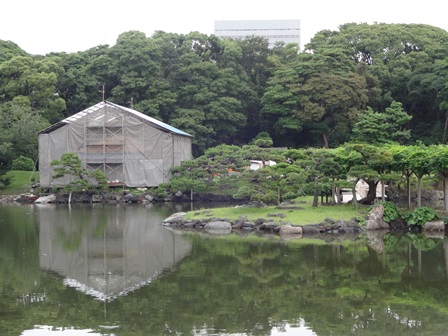
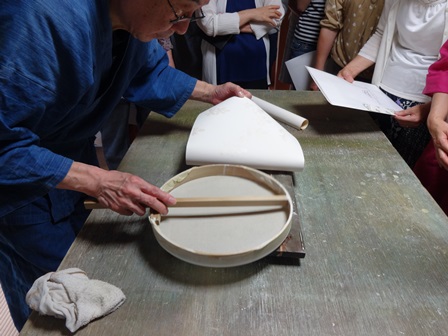
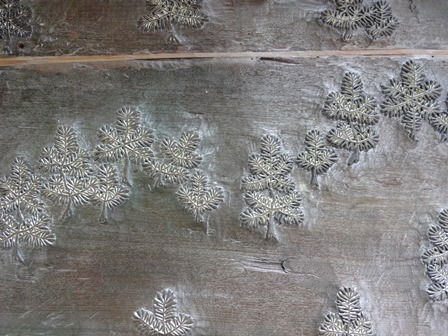

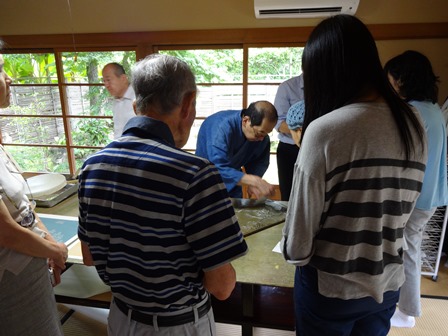
 "Tsunami" is a story of a human footing. In the novel, Shinta, who was born in a fisherman in Noto and drifted to Edo and was stopped by Okabiki while walking around the town, was taken to Tsujibansho, and was taken to a temporary prison in Temmacho. Will be put in From Temmacho, they are sent to Kanayama in Sado, where they are forced to work on watering a tunnel like hell, and often lose their lives, but Shinta is fortunately sent to Ishikawajima.
"Tsunami" is a story of a human footing. In the novel, Shinta, who was born in a fisherman in Noto and drifted to Edo and was stopped by Okabiki while walking around the town, was taken to Tsujibansho, and was taken to a temporary prison in Temmacho. Will be put in From Temmacho, they are sent to Kanayama in Sado, where they are forced to work on watering a tunnel like hell, and often lose their lives, but Shinta is fortunately sent to Ishikawajima.
